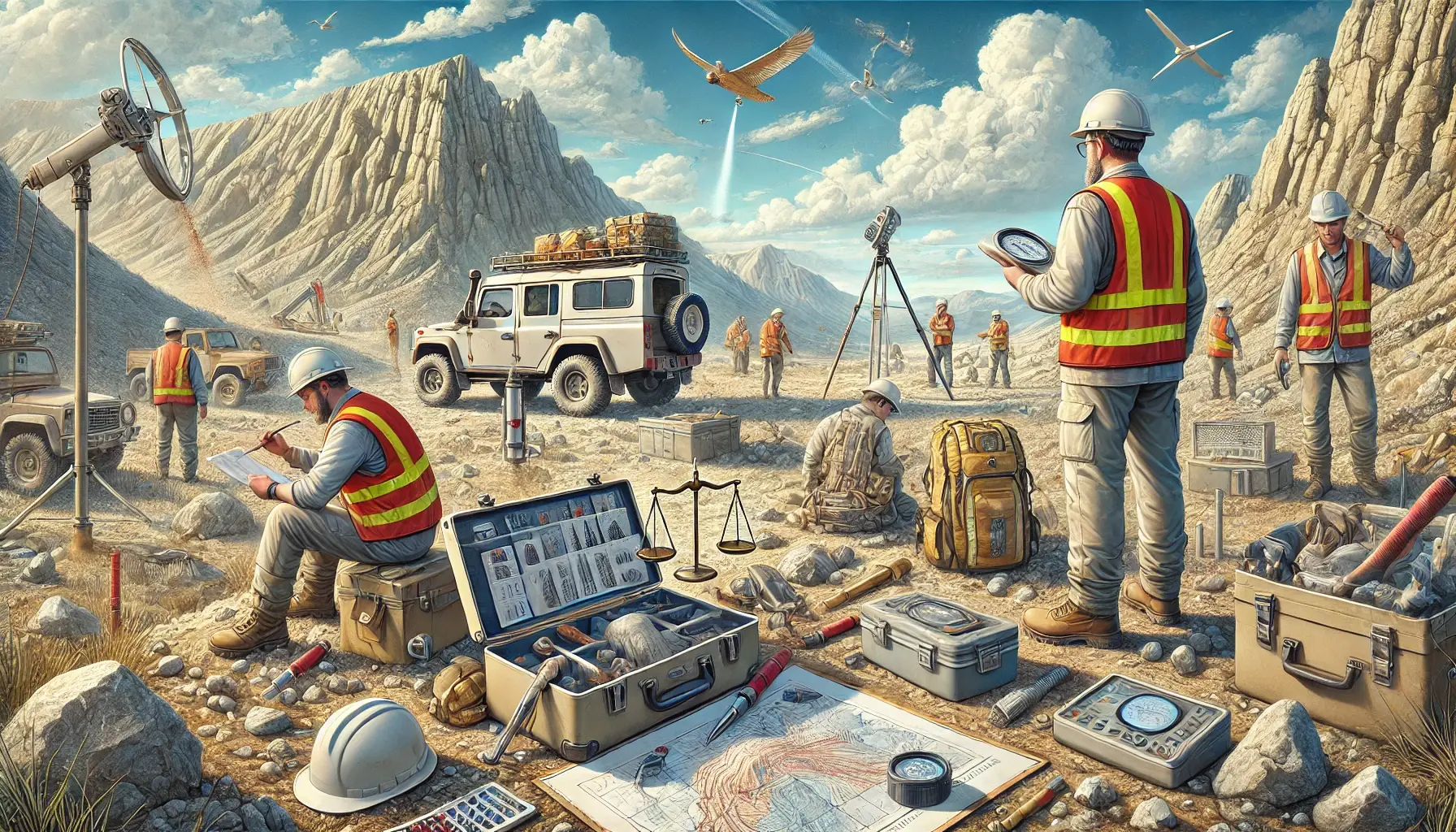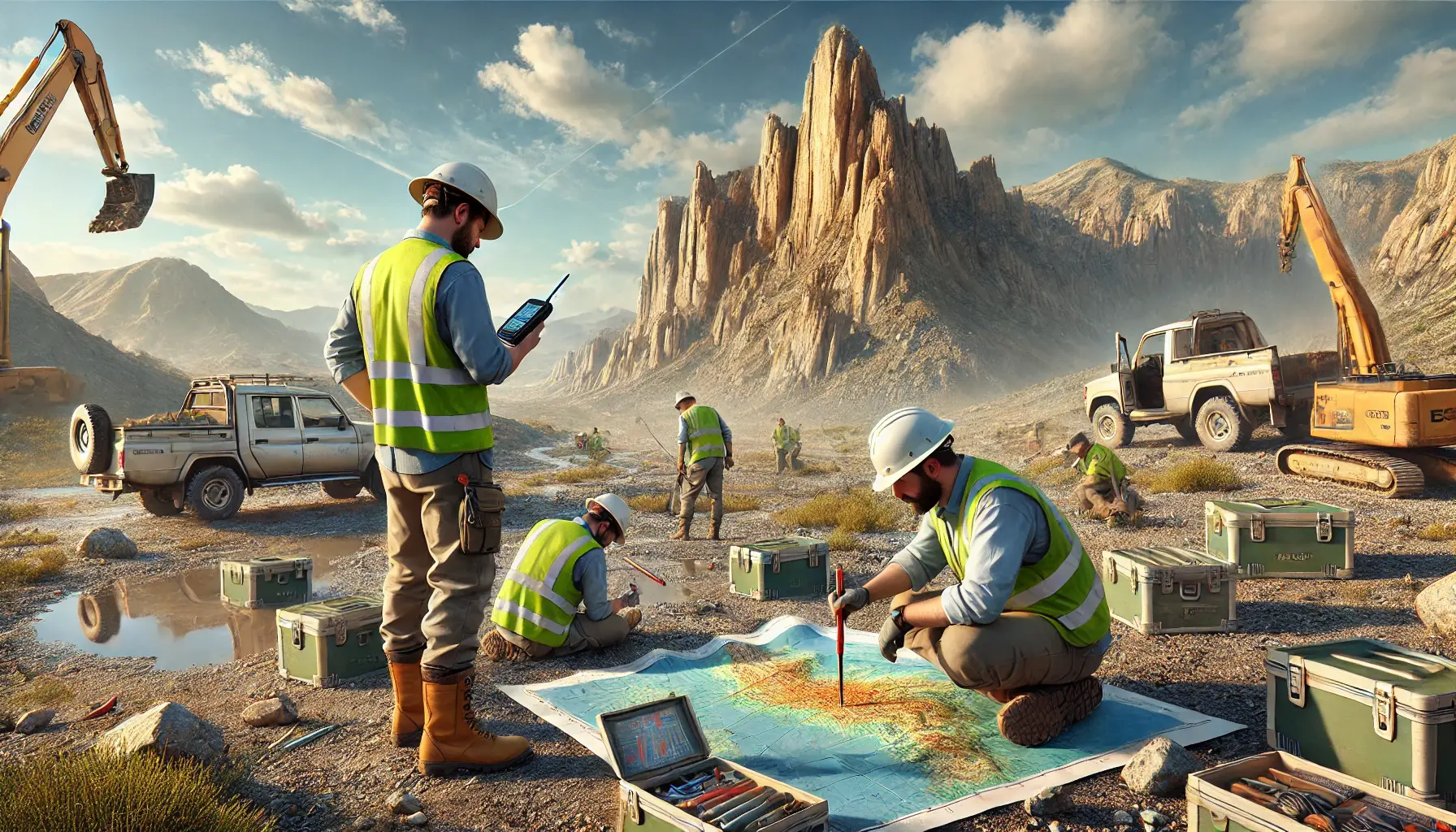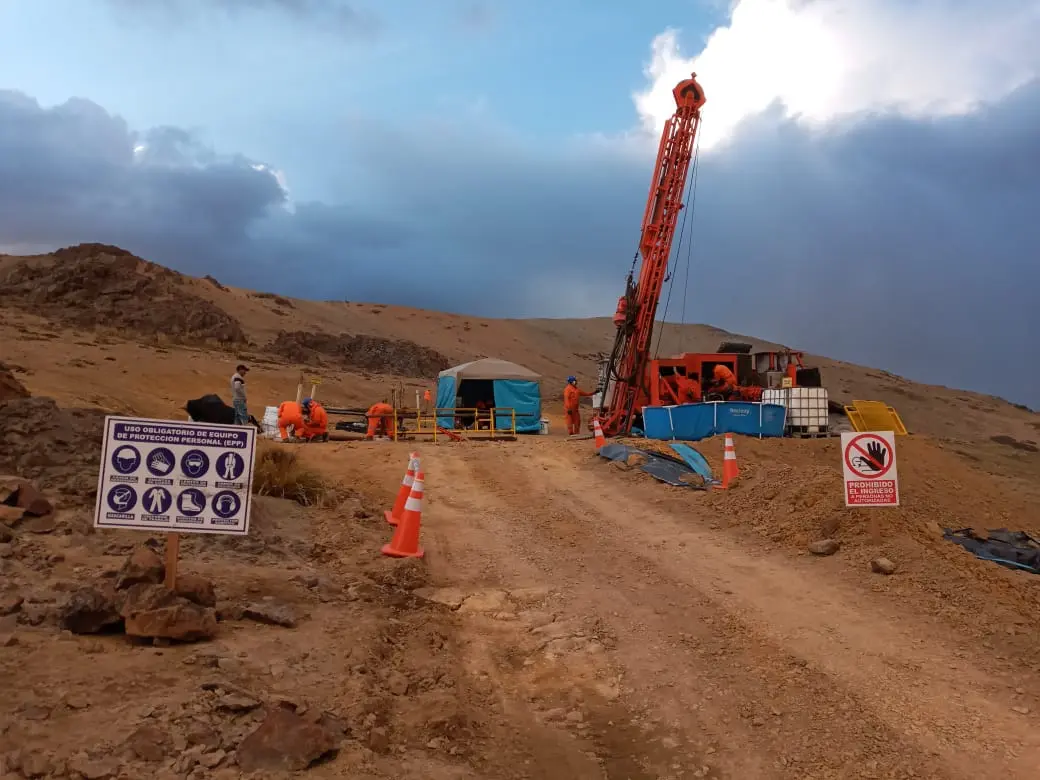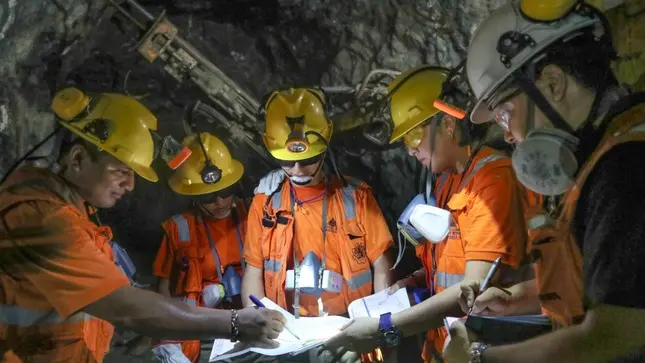Introduction
Mineral exploration is a detailed and strategic process that seeks to identify and evaluate mineral deposits with economic potential. From the initial stages of prospecting to the final decision of production, each phase is important to ensure the viability of a mining project. Among these stages, diamond drilling with core extraction or drilling samples is considered one of the most costly yet fundamental, as it provides detailed and accurate information about the quality, quantity, and distribution of the minerals. In this brief article, the most important stages of mineral exploration are described, leading up to one of the most decisive phases that involves diamond drilling.
1. Prospecting: The Starting Point

Mineral exploration begins with prospecting, a phase in which geologists search for signs of mineralization in extensive areas. To do this, they use techniques such as:
• Geological studies: Analysis of maps and rock formations.
•Geophysics: Magnetic, gravimetric, and electromagnetic measurements.
• Geochemistry: Analysis of soil, water, and vegetation samples.
The objective is to identify areas with mineralogical potential that warrant further investigation.
2. Initial exploration: Defining the area of interest

Once a promising area is identified, the initial exploration begins. This stage includes:
• Detailed geological mapping: To understand the structure and composition of the land.
• Systematic sampling: Collection of rock and soil samples for laboratory analysis.
• Surface exploratory drilling: To obtain a preliminary idea of the mineralization .
The results of this phase help determine if the deposit has enough potential to justify a larger investment.
3. Advanced exploration: Diamond drilling

Advanced exploration is where diamond drilling plays a crucial role. This technique, although expensive, is one of the most precise and reliable for assessing a mineral deposit.
Diamond drilling is a drilling method that uses a bit embedded or impregnated with synthetic diamonds to extract cylindrical rock cores or samples. These cores provide an intact and representative sample of the subsurface, allowing for precise analysis of the mineral's composition, structure, and quality.
It might be of interest to you:
DIAMOND DRILLING IN MINING
How is it done?
1. Planning: A drilling grid is designed based on previous studies.
2. Execution: Drilling is done at variable depths, depending on the reservoir .
3Core extraction: The samples are extracted and stored in boxes for analysis.
4Laboratory analysis: Samples are studied to determine the concentration of minerals, lithology, and other geological characteristics.
Obtained data:
• Mineral quality: Degree of purity and concentration of the mineral.
• Quantity: Estimated volume of the deposit.
• Distribution: Location and extent of the mineral in the subsurface.
Importance in Decision Making
The information obtained through diamond drilling is essential for:
• Estimate reserves: Calculate the volume and economic value of the deposit.
• Plan the mine: Decide on the extraction method (open-pit or underground).
• Evaluate the economic feasibility: Determine if the project is profitable.
4. Design and planning: Preparing for exploitation

With the data from the diamond drilling, the mine is designed and its operation is planned. This stage includes:
• Mine design: Selection of the extraction method and arrangement of the infrastructure.
• Environmental impact studies: To minimize the impact on the ecosystem and local communities.
• Obtaining permits: Compliance with regulations and standards.
5. Production: Extraction and processing of the mineral

Finally, if all the previous stages are successful, production begins. This phase includes:
• Mineral extraction: Use of specialized machinery and techniques.
• Processing: Separation of the ore from the waste rock and refining.
• Marketing: Sale of the mineral to national or international markets.
During production, environmental and social impacts are constantly monitored to ensure sustainable operation.
Conclusion
Mineral exploration is a rigorous process that combines science, technology, and strategic planning. Diamond drilling stands out as one of the most critical stages, as it provides accurate and reliable information about the mineral deposit. Although it is expensive, its importance lies in enabling informed decisions and ensuring the economic viability of the project. With technological advancements and a focus on sustainability, the mining industry continues to evolve to meet global demands while protecting the environment and communities..
Are you interested in learning more about mineral exploration or how diamond drilling plays a very important role in the industry?
Leave us your comments or contact us for more information!